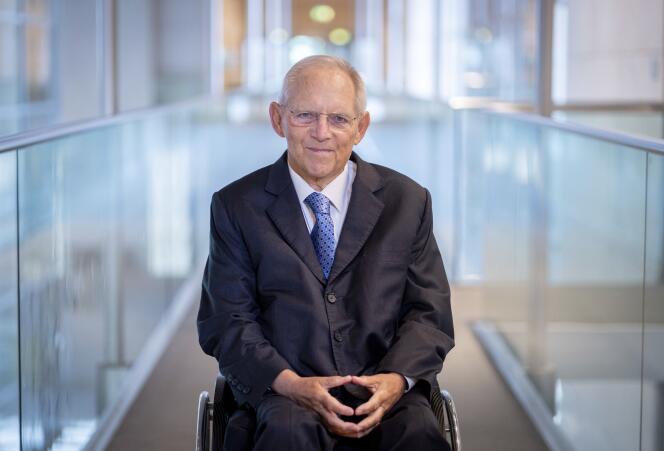
He was the elder statesman of German politics. A member of parliament for half a century, Helmut Kohl's interior minister at the time of reunification and Angela Merkel's finance minister at the time of the eurozone crisis, Wolfgang Schäuble died of cancer on Tuesday, December 26, at the age of 81. Culminating in the presidency of the Bundestag, which he held from 2017 to 2021, his long career was nevertheless marked by one frustration: That of never having been Chancellor (leader of the German government) himself.
Born on September 18, 1942, in Freiburg im Breisgau, near the French border, Schäuble was only 30 when first elected to parliament. A doctor of law and author of a thesis on the auditing profession, he was one of those who sought to modernize the Christian Democratic Union (CDU), of which his tax adviser father was a regional representative from 1947 to 1952. Joining the CDU in 1965, Schäuble belonged to the younger generation seeking to modernize the party, in opposition since 1969 under its new leader, Helmut Kohl. When Kohl succeeded the Social Democrat Helmut Schmidt (SPD) as head of government in 1982, Schäuble became secretary general of the CDU-CSU group in the Bundestag. Two years later, he was appointed head of the Federal Chancellery, in other words Kohl's right-hand man, before becoming his interior minister from April 1989 to November 1991.
In this position, Schäuble experienced the most intense two years of his life. On August 31 1990, nine months after the fall of the Berlin Wall, it was he who, on behalf of the West German government, negotiated and signed the treaty governing the country's reunification. In a 1993 book, he summed up his vision as follows: "In my talks with our partners in the German Democratic Republic (GDR), my message has always been: my dear friends, this is about the GDR joining the Federal Republic of Germany, not the other way round. We have a tried and tested Basic Law. We are doing everything we can for you. You are very welcome. [...] But this is not the unification of two equal states."
Humiliated by Angela Merkel
Schäuble might never have seen the fruits of this historic process, in which he was one of the key men. On the evening of October 12, 1990, nine days after reunification, an unbalanced man shot him twice with a revolver during an election meeting in his Oppenau (Baden-Württemberg) constituency. His spinal cord was damaged, the doctors' prognosis was guarded and many thought his career was over. Not so. At the age of 48, this former top-level skier and tennis player, henceforth only seen in a wheelchair, showed that his fighting spirit was intact. On June 20, 1991, he made a fervent plea for the capital to be moved from Bonn to Berlin, despite the opposition of many of his political friends. "The land of my heart is near Strasbourg. But Europe is more than just Western Europe. We Germans won our unity because Europe wanted to end its division. Choosing Berlin means choosing to overcome the division of Europe," he declared in a brief speech considered to be the best of his career.
You have 63.44% of this article left to read. The rest is for subscribers only.